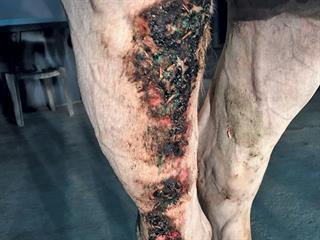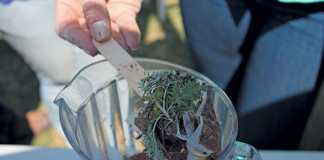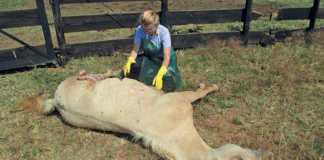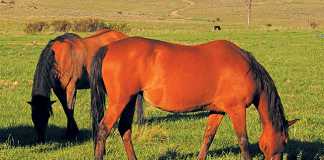
Hot, moist weather after a mild winter sees an increased number of flies, ticks and other parasites. One of the most challenging problems this gives rise to is summer sores – skin lesions infected by Habronema muscae or Draschia megastoma larvae.
The adult worms of both species live on the inside wall of the horse’s stomach. Their eggs leave the body through manure and enter the environment, where they’re ingested by the larvae of various types of flies, including house, stable and face flies.
The eggs develop into more advanced larval stages inside the flies, which then transport them back to the horse. When infected flies land near a horse’s lips, the larvae are released and swallowed by the horse, completing their life-cycle.
Summer sores occur when stomach worm larvae are deposited on injured or irritated skin tissue, or mucous membranes. Prone to mild cuts and scrapes, the legs, especially from the fetlock to the coronary band, are also susceptible.
Out of place
This is an ‘abnormal’ step in the usual life-cycle of the worms. The ‘out of place’ larvae cannot grow into adult worms here, but can induce a severe local inflammatory reaction characterised by intense swelling, ulceration, redness and itching.
The lesions tend to grow rapidly.
Lesions associated with proud flesh can look similar to a summer sore, as can various skin tumours and fungal skin infections.
In addition, ophthalmic lesions may mimic types of ocular tumours and other conditions.
Diagnosis is through a tissue biopsy, but this is sometimes difficult because of the location of lesions and because larvae are not always easily recovered.
Prevention
As ever, prevention is much better than treatment. Ivermectin is commonly used to kill the adult worms in the stomach and the larval forms in the skin tissue.
A single dose is generally enough, but some horses don’t respond, or become re-infected, necessitating multiple doses.
Corticosteroids reduce the inflammation and antimicrobials treat secondary infections, usually a result of self-inflicted biting, rubbing and itching.
Fly control and manure removal can greatly reduce the incidence and severity of summer sores. Use a good fly repellent, and reapply twice daily. This is much easier than treating the sores.
A major shift in the methods of equine parasite control has been underway during the past few years. An evidence-based approach to deworming horses, which involves increased faecal testing and decreased use of anthelmintics based on test results, are recommended.
This said, I cannot stress enough that there is no one correct parasite-control programme.
What’s best for one stable won’t necessarily work for another. But we do know that the traditional (every eight weeks) approach is a very poor control strategy.
The additional use of Ivermectin and moxidectin during the hot summer months is necessary to provide protection from ticks and fly larvae, and to keep summer sores from occurring.
Sources: Kaplan RM, Klei TR, Lyons ET, et al: ‘Prevalence of anthelmintic resistant cyathostomes on horse farms’ (Journal of the American Veterinary Medical Association, 2004; 225(6):903-910.0); Kaplan RM, Nielsen MK. ‘An evidence-based approach to equine parasite control’ (Equine Veterinary Education, 2010; 22(6):306-316).
Kim Dyson breeds Arabians and Lusitanos, and has 22 years’ experience in holistic equine and human body work.













